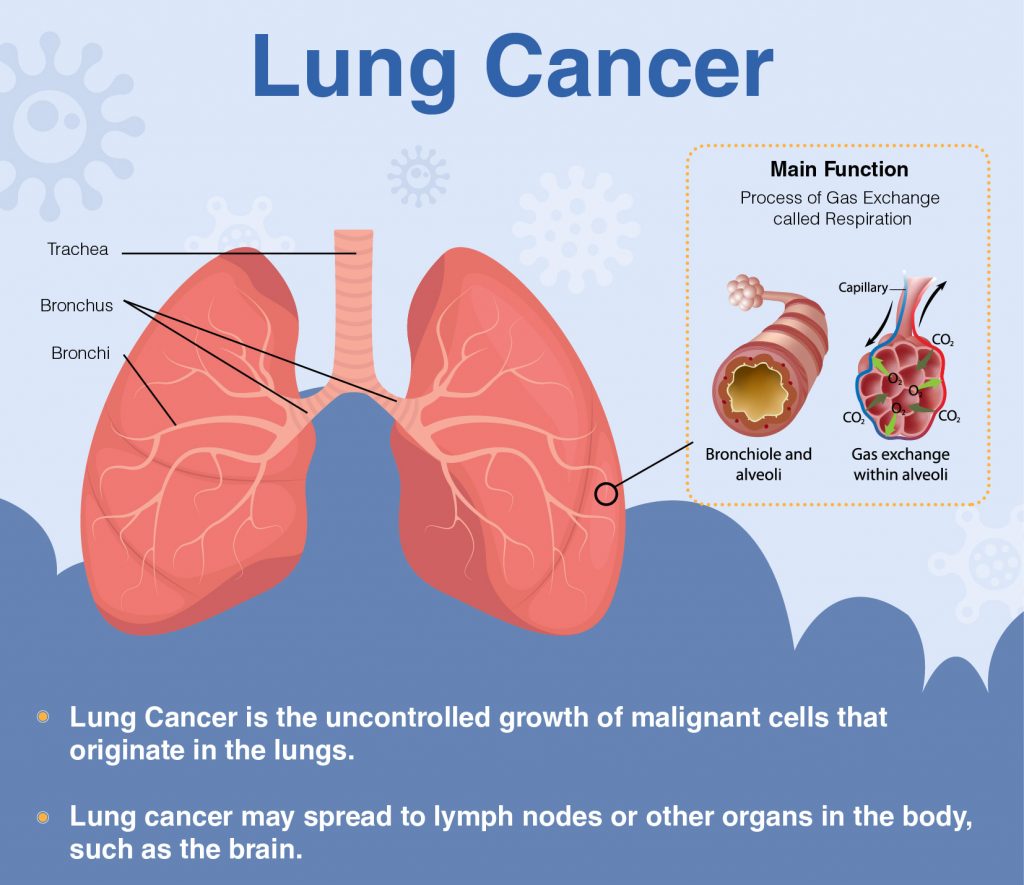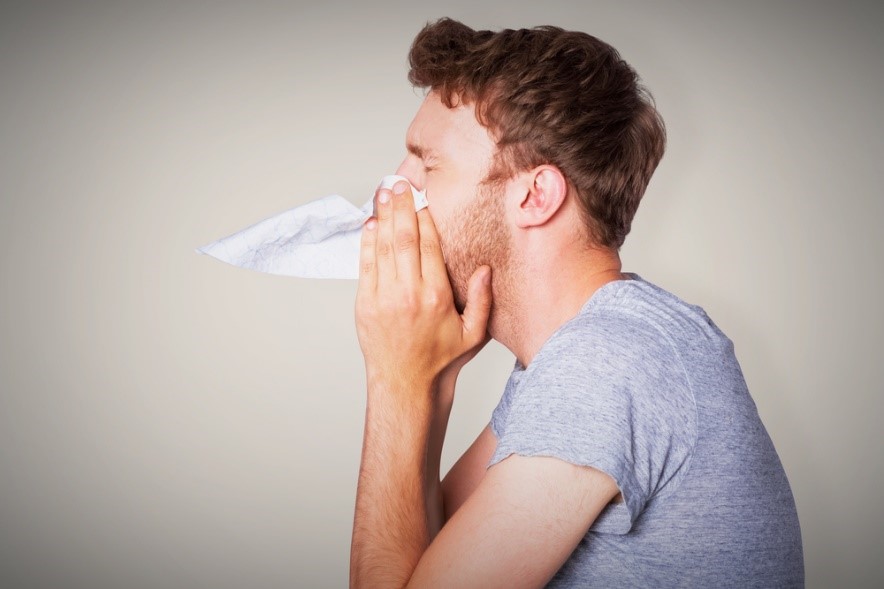Lung Cancer: Signs, Symptoms, Diagnosis & Treatment
Overview
The lungs are part of the respiratory system, a group of organs and tissues that work together to help one breathe. Each lung is divided into lobes. The bronchial tree running through the lungs is made up of the windpipe, bronchus, bronchi, bronchioles, and alveoli.
The main function of the lungs is the process of gas exchange called respiration.
In respiration, oxygen from incoming air enters the blood and carbon dioxide, waste gas from the metabolism, leaves the blood.
Do you know
- Lung Cancer is the second leading type of cancer known to affect men and women across the globe.
- 25% of cancer related deaths are due to lung cancer.
- In India, Lung cancer constitutes 6.9% of all new cancer cases and 9.3% of all cancer related deaths in both sexes.
What is Lung Cancer?
Lung Cancer is the uncontrolled growth of malignant cells that originate in the lungs. Lung cancer may spread to lymph nodes or other organs in the body, such as the brain.
The types of lung cancer are typically categorized into two main groups:
- Small cell lung cancer: It occurs almost exclusively in heavy smokers and is less common than non-small cell lung cancer.
- Non-small cell lung cancer: It is an umbrella term for several types of lung cancers that behave similarly. Non-small cell lung cancers include squamous cell carcinoma, adenocarcinoma, and large cell carcinoma.
What are the symptoms of Lung Cancer?
The symptoms of lung cancer can vary depending on the type and stage of the disease. Common signs include:
- A cough that doesn’t go away
- Coughing up blood, even a small amount
- Shortness of breath
- Chest pain
- Hoarseness
- Losing weight without trying
- Appetite loss
- Headache
- Loss of memory
What are the main causes of Lung Cancer?
- Smoking Tobacco is the biggest cause of lung-related complaints. The risk of lung cancer increases with the length of time and number of cigarettes smoked. Quitting at any age can significantly lower the risk of developing lung cancer.
- Secondhand smoke is especially bad for babies and young children.
- Radon Gas is a recognized cause of lung cancer.
- Air pollution may contribute to asthma, COPD, lung cancer, and other lung diseases.
- Exposure to asbestos and other carcinogens can increase the risk of developing lung cancer.
- Personal or Family history of lung cancer

Tips for healthy lungs
- Don’t smoke and avoid secondhand smoke.
- Minimize exposure to outdoor air pollution
- Avoid exposure to indoor pollutants
- Avoid carcinogens at work
- Get regular aerobic exercise
- Eat a diet full of fruits and vegetable

How is Lung disease diagnosed?
Early diagnosis of lung cancer can be lifesaving as around 70% of lung cancer patients will survive for at least a year if diagnosed at the earliest stage. There are various tests used to diagnose lung cancer as:
Chest X-Ray
It is used by doctors to check lung structure and chest cavity. An X-ray will show areas of the lung that are clogged up or scarred.
CT Scan
CT Scan provides a more detailed evaluation of lung structure.
Sputum cytology
The sputum analysis can at times reveal the presence of lung cancer cells.
Biopsy
A sample of abnormal cells may be removed in a procedure called a biopsy. The sample may also be taken from lymph nodes or other areas where cancer has spread.
Stages in Lung Cancer
Staging lung cancer helps guide treatment and is based on whether the cancer is local or has spread from the lungs to the lymph nodes or other organs.
Stages of Non-small Cell Lung Cancer
Stage I: The cancer is located only in the lungs and has not spread to any lymph nodes.
Stage II: The cancer is in the lung and nearby lymph nodes.
Stage III: The cancer is found in the lung and in the lymph nodes in the middle of the chest. This stage has two subtypes as
- Stage IIIA: The cancer is found in lymph nodes, but only on the same side of the chest where cancer first started growing.
- Stage IIIB: The cancer is found in lymph nodes on the opposite side of the chest or to lymph nodes above the collarbone.
Stage IV: This is the most advanced stage of lung cancer. This is when cancer has spread to both lungs, to fluid in the area around the lungs, or to another part of the body, such as the liver or other organs.
Stages of Small Cell Lung Cancer
Limited stage: In this stage, cancer is found on one side of the chest, involving just one part of the lung and nearby lymph nodes.
Extensive stage: In this stage, cancer has spread to other regions of the chest or other parts of the body.
How is Lung cancer treated?
The doctor may recommend below cancer treatment plans based on several factors, such as overall health, the type, the stage of cancer and the size of cells present and whether they have spread. Often, combinations of therapies are used.
- Surgery may be an option if the cancer is confined to the lungs.
- Radiation Therapy uses high-powered energy beams from sources such as X-rays and protons to kill cancer cells.
- Chemotherapy uses drugs to shrink or eradicate cancer cells.
- Radiosurgery is an intense radiation treatment that aims many beams of radiation from multiple angles at cancer.
- Targeted drug therapy focuses on specific abnormalities present within cancer cells. By blocking these abnormalities, targeted drug treatments can cause cancer cells to die.

Immunotherapy works by boosting the body’s immune system to fight cancer.














